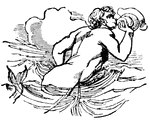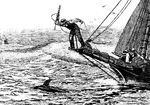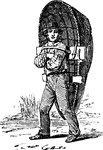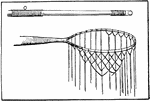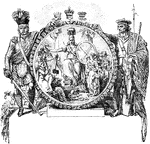Search for "fisherman"
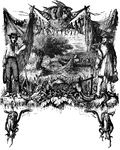
Pisces
"A fish may be defined as a Vertibrate animal breathing through the medium of water, by means of branchiae,…
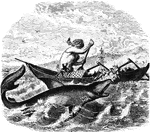
Shark
"Theses are at once distinguished by their elongated, spindle-shaped bodies, their branchial apertures…

Knots and Splices
"Knots and splices include all the various methods of tying, fastening, and joining ropes or cords.…
Knots and Splices
"Knots and splices include all the various methods of tying, fastening, and joining ropes or cords.…
Knots and Splices
"Knots and splices include all the various methods of tying, fastening, and joining ropes or cords.…
Knots and Splices
"Knots and splices include all the various methods of tying, fastening, and joining ropes or cords.…

Knots and Splices
"Knots and splices include all the various methods of tying, fastening, and joining ropes or cords.…

Knots and Splices
"Knots and splices include all the various methods of tying, fastening, and joining ropes or cords.…
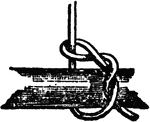
Knots and Splices
"Knots and splices include all the various methods of tying, fastening, and joining ropes or cords.…
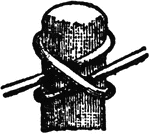
Knots and Splices
"Knots and splices include all the various methods of tying, fastening, and joining ropes or cords.…

Knots and Splices
"Knots and splices include all the various methods of tying, fastening, and joining ropes or cords.…
Knots and Splices
"Knots and splices include all the various methods of tying, fastening, and joining ropes or cords.…
Knots and Splices
"Knots and splices include all the various methods of tying, fastening, and joining ropes or cords.…
Knots and Splices
"Knots and splices include all the various methods of tying, fastening, and joining ropes or cords.…

Knots and Splices
"Knots and splices include all the various methods of tying, fastening, and joining ropes or cords.…
Knots and Splices
"Knots and splices include all the various methods of tying, fastening, and joining ropes or cords.…
Knots and Splices
"Knots and splices include all the various methods of tying, fastening, and joining ropes or cords.…

Knots and Splices
"Knots and splices include all the various methods of tying, fastening, and joining ropes or cords.…

Knots and Splices
"Knots and splices include all the various methods of tying, fastening, and joining ropes or cords.…

Knots and Splices
"Knots and splices include all the various methods of tying, fastening, and joining ropes or cords.…

Knots and Splices
"Knots and splices include all the various methods of tying, fastening, and joining ropes or cords.…

Knots and Splices
"Knots and splices include all the various methods of tying, fastening, and joining ropes or cords.…

Lake Dwellings
"The earliest account of lake dwellings is to be found in Herodotus, who describes a Thracian tribe…

Paper Money, Two Thirds of a Dollar Bill, 1774
Two Thirds of a Dollar (2/3 dollar) Maryland currency from 1774. Image on the right shows a shield with…
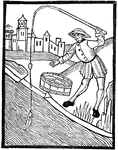
Fyshynge with an Angle
A print from the engraving, ""Fyshynge with an Angle" from 'The Book of St. Albans' printed by Wynkyn…

Fisherman
An African American adult male standing in tall grasses holding a fish on one hand and his hat in another.

Seal of Maryland
The Great Seal of the State of Maryland. The seal is a shield being held by plowman and a fisherman.…
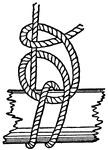
Fisherman's Bend
"Fisherman's bend -- Take two turn round a spar, then a half-hitch round the standing part and between…
!["Studding-sail halyard bend -- Similar to the [Fisherman's Bend], except that the end is tucked under the first round turn; this is more snug. A magnus hitch has two round turns and one on the other side of the standing part with the end through the bight."](https://etc.usf.edu/clipart/58300/58374/58374_studdingsail_mth.gif)
Studding-sail Halyard Bend
"Studding-sail halyard bend -- Similar to the [Fisherman's Bend], except that the end is tucked under…
Fighting Stopper
"Naut., a contrivance, consisting of two wooden deadeyes and a rope lanyard, for quickly securing any…

Fly Book for Fishing
"A case in the form of a book in which to keep fishing-flies. It has leaves of Bristol-board or other…

Fisherman
Tangrams, invented by the Chinese, are used to develop geometric thinking and spatial sense. Seven figures…

Fisherman
Tangrams, invented by the Chinese, are used to develop geometric thinking and spatial sense. Seven figures…

Fisherman
Tangrams, invented by the Chinese, are used to develop geometric thinking and spatial sense. Seven figures…

Fisherman
Tangrams, invented by the Chinese, are used to develop geometric thinking and spatial sense. Seven figures…
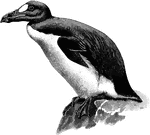
Great Auk
"This species (Alca impennis or Great Auk), extirpated chiefly by the persecution of fisherman, but…
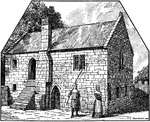
Somersetshire Fisherman's Cottage
An outside view of a fisherman's cottage in Somersetshire illustrating common architectural features…
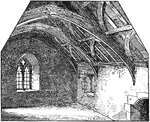
Interior Somersetshire Fisherman's Cottage
The interior view of the Fisherman's Cottage in Somersetshire. The interior of the cottage have a window…
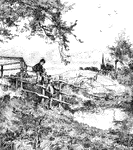
Young Boys Fishing
An illustration of two young boys; one is fishing, the other is sitting on a fence.
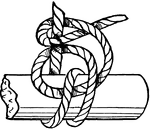
Fisherman's Bend
To tie a fisherman's bend, take two turns round a spar, then a half hitch round the standing part, and…

The Miraculous Draught of Fish - Jesus Fishes with His Disciples
"And when he had left speaking, he said unto Simon, Put out into the deep, and let down your nets for…
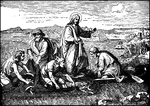
The Miraculous Catch of Fish - Jesus Fills the Disciples' Boats with Fish
"And when he had left speaking, he said unto Simon, Put out into the deep, and let down your nets for…
